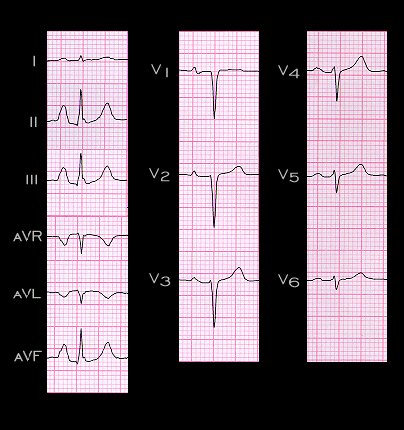
Another example of poor R wave progression is shown in this tracing from a 54 year old patient with severe chronic pulmonary disease but no clinical evidence of coronary disease. The tall P waves in leads II, III and aVF (P pulmonale}, vertical axis of the QRS complex in the frontal plane (+85 degrees) and poor R wave progression in the chest leads all reflect the chronic pulmonary disease.
